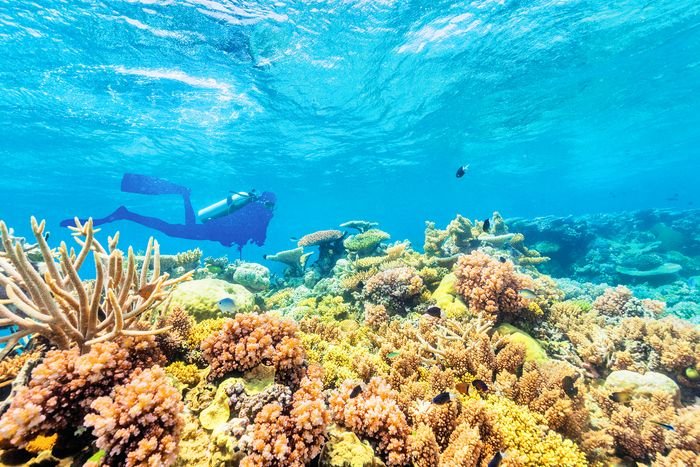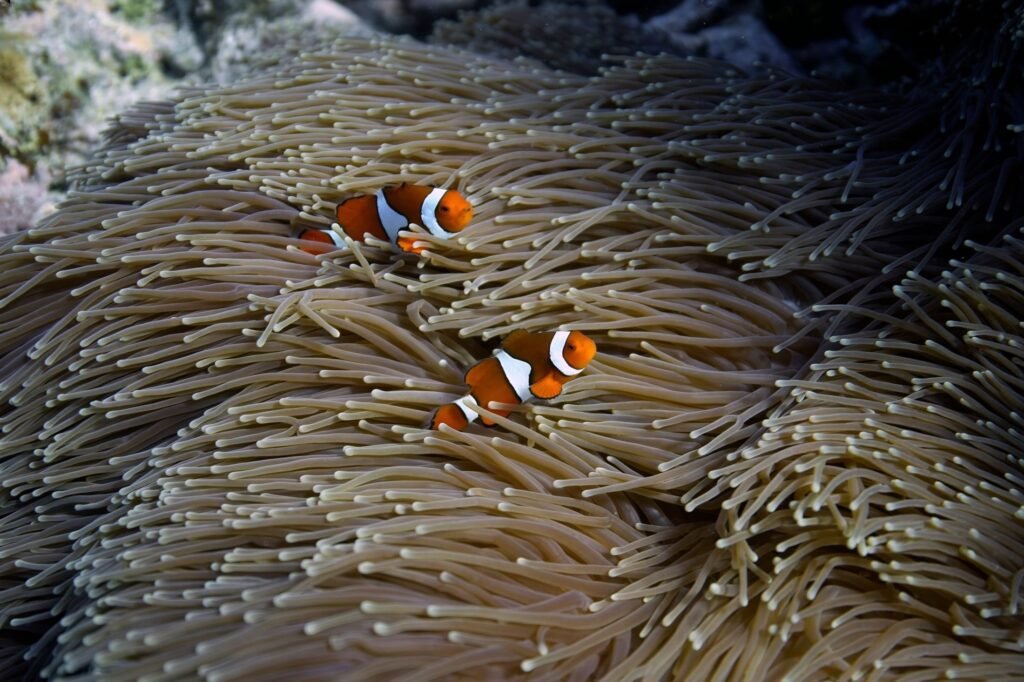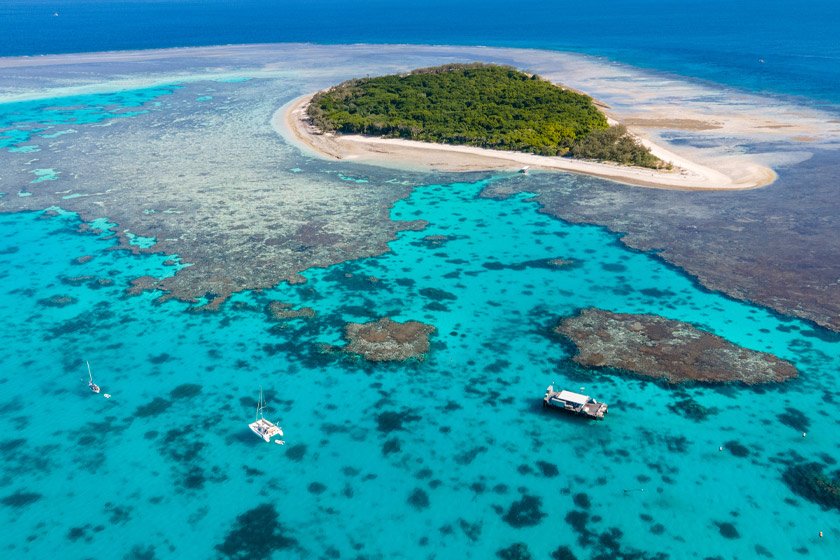Discovering the Great Barrier Reef: A Journey of the World’s Natural Wonders
Preserving Paradise: The Importance of Protecting the Great Barrier Reef
The Great Barrier Reef is one of the world’s most breathtaking natural wonders, located off the coast of Queensland, Australia. Spanning over 2,300 kilometers, it is the largest coral reef system in the world and is home to a diverse array of marine life. With its crystal-clear waters, colorful coral formations, and abundant marine species, it is a must-see destination for anyone interested in nature and marine biology.
The Great Barrier Reef is made up of over 2,900 individual reefs and around 900 islands. It is home to an estimated 1,500 species of fish, 4,000 species of mollusks, and 400 species of coral. It is also home to a variety of marine mammals, including dolphins, whales, and dugongs. Visitors to the Great Barrier Reef can explore this diverse ecosystem in a variety of ways, including snorkeling, diving, and taking a glass-bottom boat tour.
One of the best ways to explore the Great Barrier Reef is by snorkeling. Snorkeling allows visitors to get up close and personal with the reef and its inhabitants. Many tour companies offer snorkeling excursions, which provide all the necessary equipment and an experienced guide to ensure visitors have a safe and enjoyable experience. Snorkeling in the Great Barrier Reef is an unforgettable experience, with colorful coral formations, schools of fish, and the occasional sea turtle or shark sighting.
For those who are certified divers, exploring the Great Barrier Reef underwater is an absolute must. There are many dive sites throughout the reef, each offering a unique experience. Some of the most popular dive sites include the Cod Hole, where divers can swim with giant potato cod, and Osprey Reef, where visitors can see reef sharks, manta rays, and other large marine species.

For those who prefer to stay dry, taking a glass-bottom boat tour is an excellent option. These tours allow visitors to see the reef from above, without getting wet. The boats have large windows on the bottom, providing a clear view of the coral formations and marine life below. Some tours even offer a guided commentary, providing visitors with information about the reef and its inhabitants.
In addition to its stunning natural beauty, the Great Barrier Reef is also home to several islands, each with its own unique charm. One of the most popular islands is Hamilton Island, which offers a range of accommodation options, from luxurious resorts to more affordable options. The island is also home to a variety of restaurants, cafes, and bars, making it a great place to relax after a day of exploring the reef.
Another popular island destination is Lady Elliot Island. This small island is located at the southern end of the Great Barrier Reef and is known for its pristine beaches and excellent snorkeling and diving opportunities. The island is also home to a variety of accommodation options, including eco-resorts and camping facilities.
The Great Barrier Reef is not only a natural wonder but also an important ecosystem that is facing many threats, including climate change and pollution. Visitors to the reef are encouraged to take steps to minimize their impact, such as using reef-friendly sunscreen and avoiding activities that could damage the coral or disturb marine life.
In conclusion, the Great Barrier Reef is a unique and stunning destination that should be on every nature lover’s bucket list. Whether you choose to snorkel, dive, or take a glass-bottom boat tour, the reef is sure to leave a lasting impression. With its vibrant coral formations, diverse marine life, and beautiful islands, the Great Barrier Reef is truly a gem of the natural world.

The Great Barrier Reef is not only a popular tourist destination but also an important part of the world’s natural heritage. It is one of the world’s seven natural wonders and is listed as a World Heritage Site by UNESCO. The reef provides a home for many endangered species, and its economic value to Australia is estimated to be worth over $6 billion.
Despite its importance, the Great Barrier Reef is under threat from a variety of factors. Climate change is one of the most significant threats facing the reef, with rising sea temperatures and ocean acidification causing coral bleaching and death. Pollution is another major threat, with agricultural runoff, marine debris, and oil spills all having a negative impact on the reef’s health.
To help protect the reef, there are many initiatives in place, including the Great Barrier Reef Marine Park Authority, which manages the reef’s conservation and sustainability. Visitors to the reef can also play a role in protecting it by taking steps to minimize their impact, such as using reef-friendly sunscreen, choosing eco-friendly tour operators, and avoiding activities that could harm the reef.

One way that visitors can learn more about the Great Barrier Reef and its conservation is by visiting the many educational and research facilities located throughout the region. The Reef HQ Great Barrier Reef Aquarium in Townsville is the largest living coral reef aquarium in the world and provides visitors with a unique opportunity to learn about the reef’s marine life and conservation.
Another way to experience the reef’s unique ecosystem is by taking a night diving or snorkeling tour. At night, the reef comes alive with different marine life than during the day, such as nocturnal fish, crustaceans, and other creatures. It’s a truly unforgettable experience, and many tour operators offer night diving or snorkeling experiences.
Visitors to the Great Barrier Reef can also experience the reef from above by taking a scenic helicopter or seaplane tour. These tours provide a unique perspective on the reef’s size and scale, and the breathtaking colors and patterns of the coral formations are truly awe-inspiring.
In addition to its natural beauty and educational opportunities, the Great Barrier Reef is also home to many cultural and historical sites. The reef has been inhabited by Indigenous Australians for thousands of years, and their culture and history are deeply intertwined with the reef’s ecosystem. Visitors can learn more about Indigenous culture and history by visiting the many cultural centers and museums located throughout the region.
In conclusion, the Great Barrier Reef is a unique and precious natural wonder that should be on every traveler’s bucket list. With its breathtaking beauty, diverse marine life, and rich cultural and historical significance, it offers a once-in-a-lifetime experience that will stay with you forever. But it’s also a fragile ecosystem that requires our protection and conservation. By taking steps to minimize our impact and support conservation efforts, we can ensure that future generations can experience the wonder of the Great Barrier Reef for years to come.
